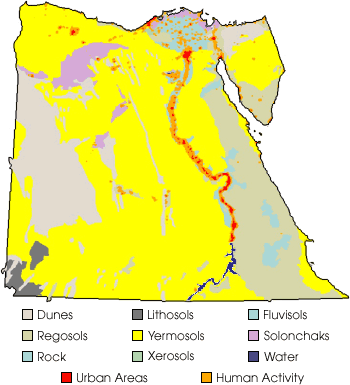

| Saving What We’ve Got Before It’s Gone | |||
What does all this mean for the U. S.? For now, Imhoff believes that
the United States still has plenty of good soil and that we are not
going to run out of food anytime soon if we work to curb our urban
sprawl. However, in other countries there is possibly more to worry
about in the near future. "We did a similar study in China,"
says Imhoff. "In China, they’re also having the same trends.
The best soils are being developed now with their increased economic
development. But they have fewer soils to rely on." Probably the
worst-case scenario is in Egypt. They have very little arable land and
it is all along the Nile Delta where everybody lives. As the population
in Egypt expands, people either have the choice of building on prime
farmland or of moving out onto very inhospitable areas of the Sahara. |
|||
In order for the world to save its farmlands for future use as the
population expands, Imhoff feels that city planners need to start
building and developing city infrastructure on rocky, non-level, and
arid soils. "I think that land use planning has to have some teeth.
We need to leave the land that is productive in agricultural use,"
he says. Until then the Goddard team will continue to monitor the U.S.
as well as other countries and alert people to this problem before we
get to the point where we have plenty of big lawns and convenience
stores, but very little food. |
A photograph of Cairo, Egypt, taken from the space shuttle. Located at the southern end of the Nile Delta, Cairo is one of the world’s fastest growing cities. It is also located on what was once prime farmland. Grey urbanized areas are continually eating into the green cropland along the Nile River—Egypt’s only arable land. (Photograph courtesy NASA Johnson Space Center Astronaut Photography) | ||
 References
World Resources Institute, 1996: World Resources 1996-97, Washington, DC. |
Among the soil types shown, only “fluvisols” are suitable for farming. Fluvisols are soils deposited by flowing water, specifically the rich silt laid down by the Nile River’s annual flooding. Other soils in Egypt are too dry, too salty, or too rocky for farming. (Image courtesy Marc Imhoff, NASA GSFC) |